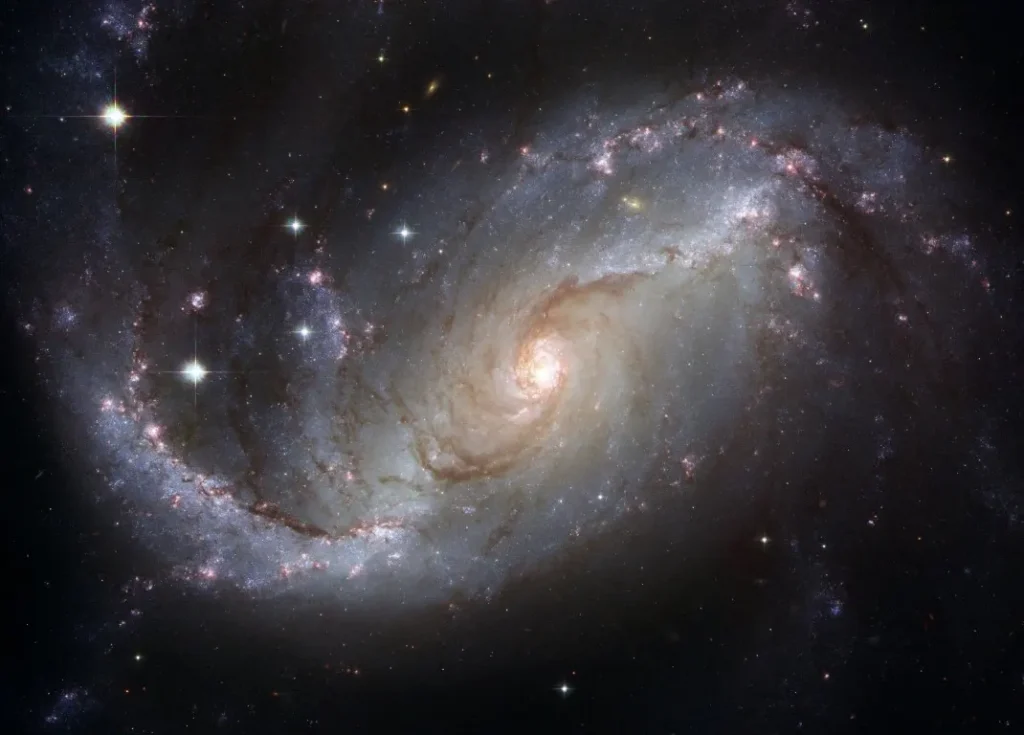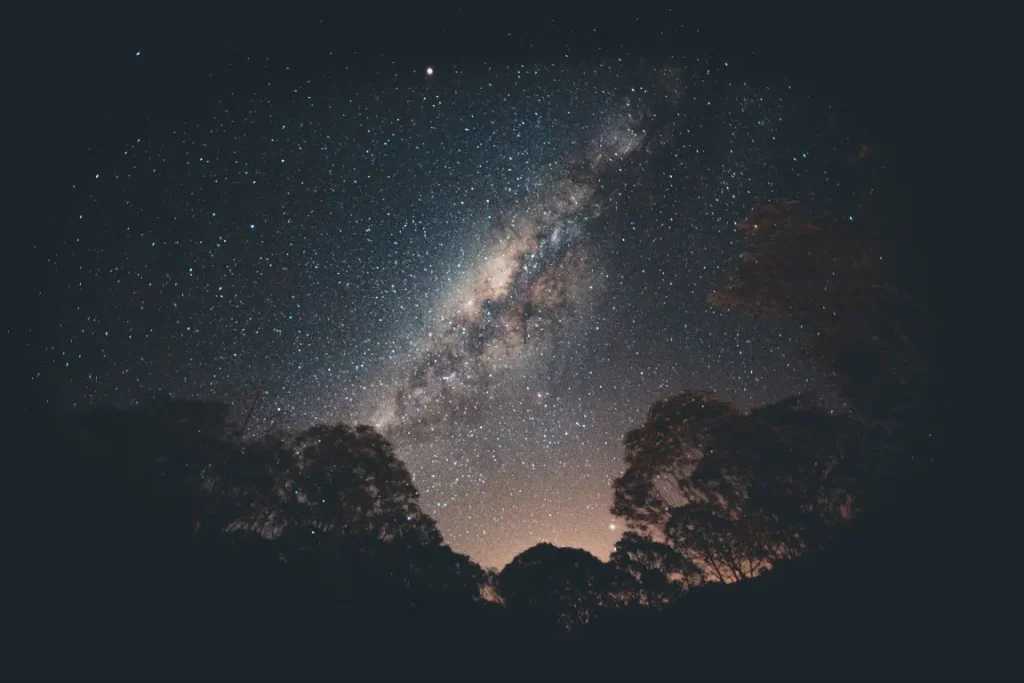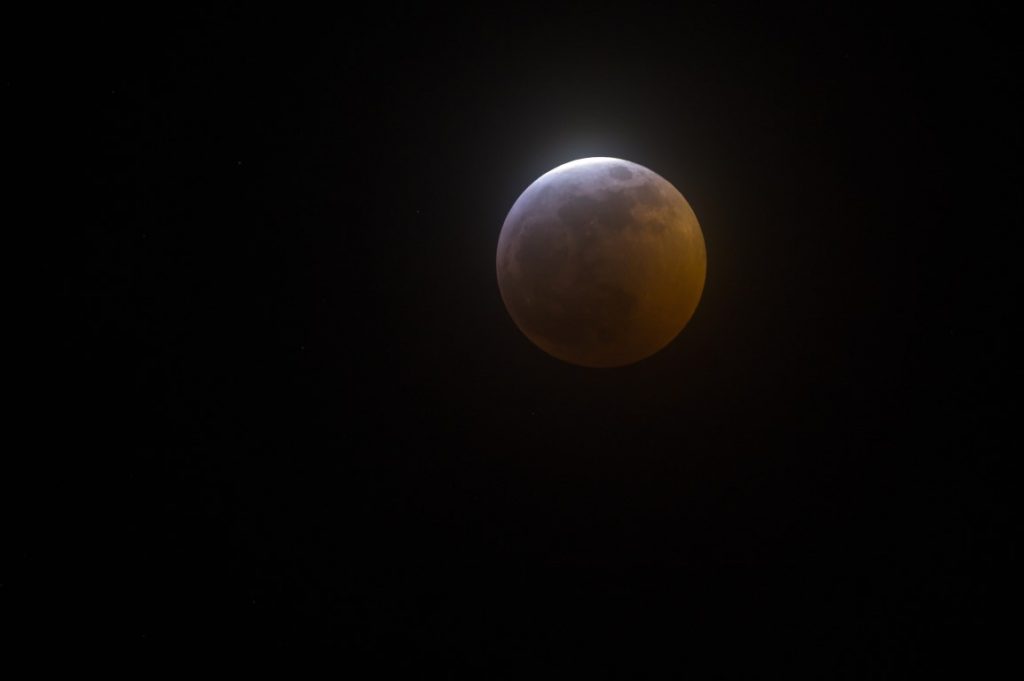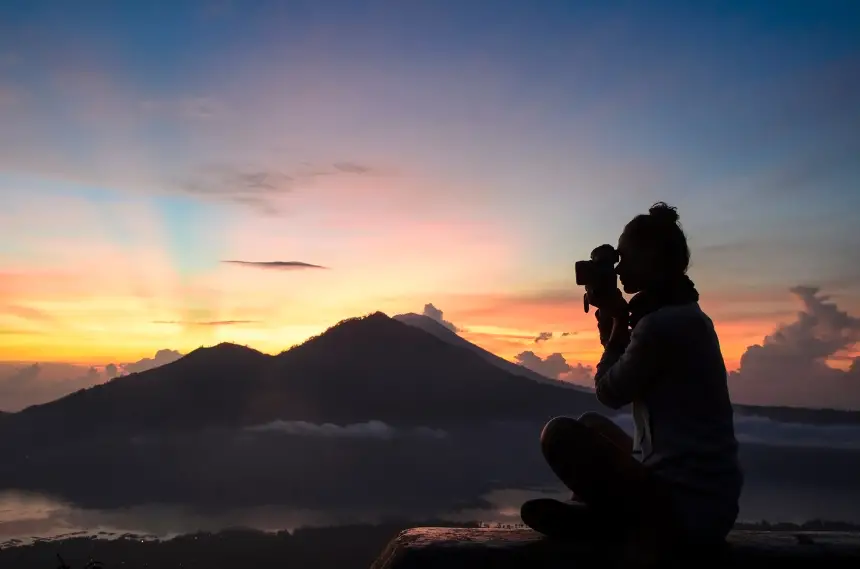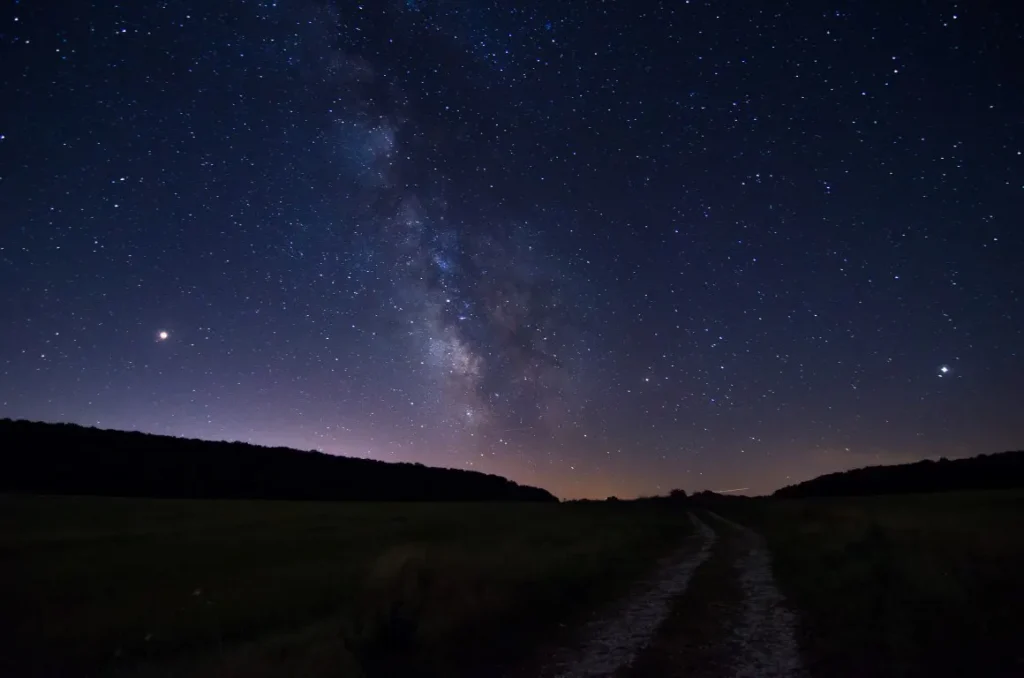
The Milky Way is a barred spiral galaxy that contains our solar system. As well as it is a beautiful and mesmerizing sight to behold, and photographs for your album.
With the advancements in smartphone camera technology, it is now possible to capture stunning photos of the Milky Way using just your phone.
In this blog, I will discuss the basics of Milky Way photography and provide tips on how to capture this natural wonder using your smartphone.
So, let’s start.
Essential equipment for capturing the Milky Way using your smartphone
Capturing stunning Milky Way photos with your smartphone requires specific equipment that you must bring along.
Here is a list of gear that I use to shoot milky way shots as well as any night sky images, with a brief explanation of each item’s purpose.
- Your smartphone: Of course, you’ll need a smartphone with a decent camera to take photos of the Milky Way.
- A sturdy semi-professional tripod with a smartphone mount: A tripod is essential to keep your smartphone stable while taking long-exposure photos. The semi-professional version offers better stability, while the smartphone mount ensures that your phone stays in place.
- A remote shutter for your smartphone: A remote shutter helps prevent camera shake when taking photos, ensuring that your photos come out sharp and clear.
- A power bank or an extra battery: Taking long-exposure photos uses a lot of battery power. Having a power bank or an extra battery can ensure that you have enough power to last through the night.
- A microfiber cloth: Dust and smudges can ruin your photos. A microfiber cloth can help you clean your smartphone’s lens, ensuring that your photos come out clear and sharp.
- A headlamp or an LED flashlight: When shooting in the dark, a headlamp or an LED flashlight can be handy. They help you navigate around the shooting location without disturbing the darkness, and the red light helps preserve your night vision.
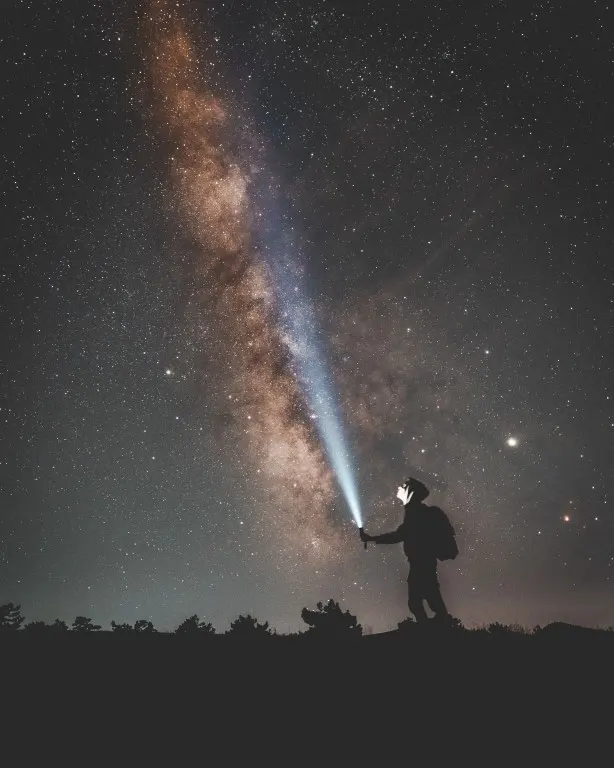
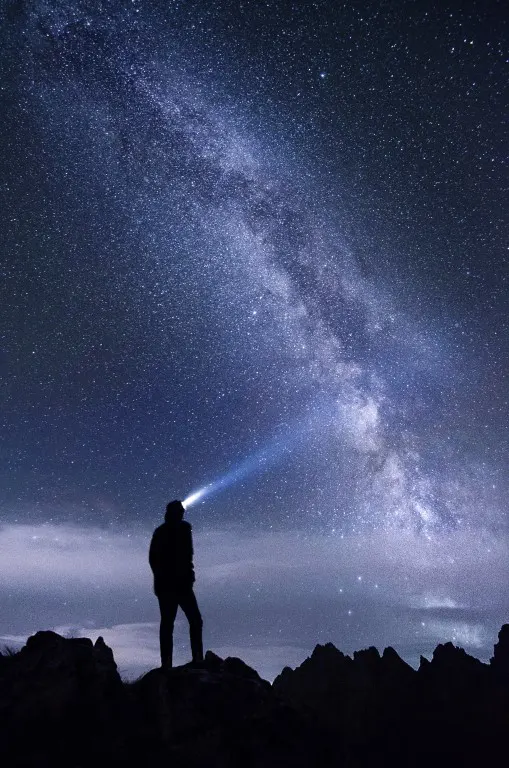
It is essential to have a tripod and remote shutter to capture clear and captivating milky way images with your smartphone as well as every night sky capturing.
This is because the extended exposure time required to take these photos makes even the slightest camera movement detrimental to the final result.
Therefore, investing in these two tools is crucial for obtaining the best possible images. Please ensure that you do not overlook the importance of these items.
As well as, if you want to familiar with astrophotography equipment, I have provided an article on astrophotography equipment for beginners.
Preparing to capture the Milky Way using Your Smartphone
To capture stunning photos of the Milky Way, you need to prepare properly. Start by choosing a moonless night with clear skies and no clouds.
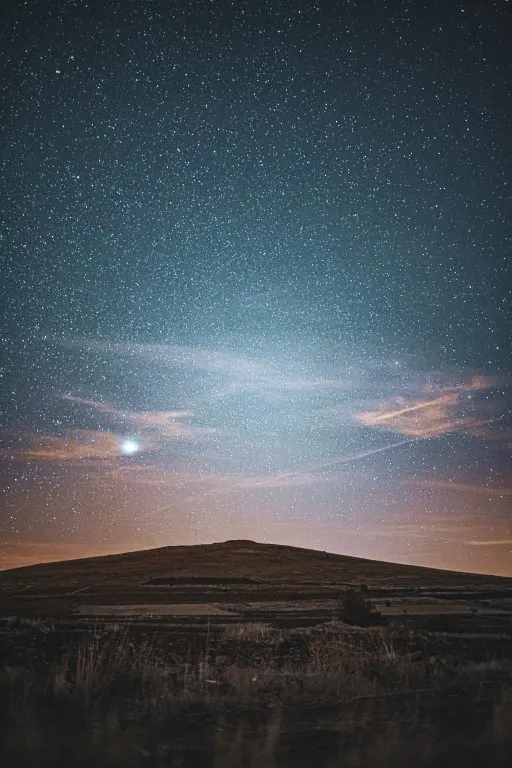
You also need to find a location with minimal light pollution. Visiting different areas at night can help you identify the best spot.
Once you have found a suitable location, return during the new moon phase to take your photos.
As well as for getting the best results, you will need a tripod and remote shutter release to minimize camera shake. Use an app to locate the Milky Way in the sky or find it yourself.
Set your smartphone camera to a shutter speed between 30 and 60 seconds and an ISO of 1600 to 3200. Point your camera to the stars and start taking photos.
The best time to capture the Milky Way with your phone
If you want to capture breathtaking images of the Milky Way with your smartphone, timing, and location are crucial.
The best time to photograph the Milky Way is during the Milky Way season, which is typically from late March to early October.
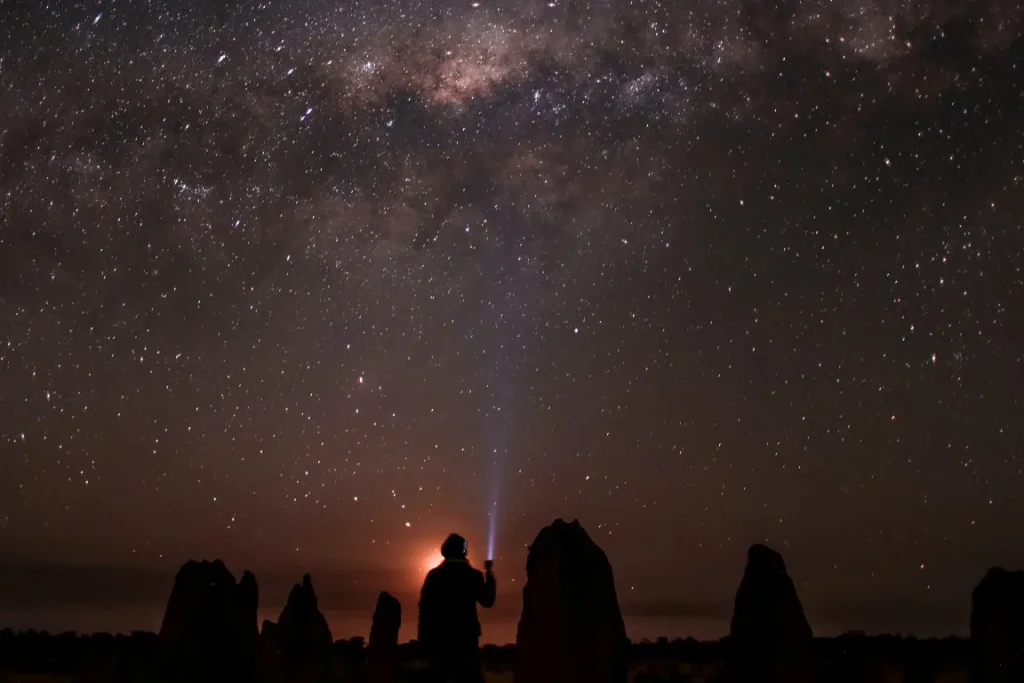
It is best to capture the milky way when there is little or no moonlight. Full moon and bright moonlight can wash out the stars, making it difficult to capture the Milky Way.
To avoid light pollution, it is essential to find a location that is extremely dark. Using a weather app can help you identify the clearest nights.
But to find the darkest places on Earth, it’s better to use a light pollution map. Avoid areas near cities, harbors, and industrial zones that add too much light to the environment. The darker the sky, the better the results.
It’s crucial to remember that the camera lens on your smartphone is not as sensitive as a DSLR lens, and even a little bit of light from the moon or city can ruin your shot.
So, make sure you choose a location that is as dark as possible to capture the perfect Milky Way image
Settings for Capturing Milky Way using my smartphone
Shutter Speed
To capture the Milky Way’s relatively soft and weak light, you’ll require an extended shutter speed ranging from 30 to 60 seconds.
Switching the manual mode in your smartphone camera app is better for achieving this proper shutter speed.
A high-end sensor, such as those found in Samsung, Apple, Huawei, and Xiaomi flagship phones, is beneficial for optimal results.
| Long Shutter Speed App for IOs | Long Shutter Speed App for Android |
|---|---|
| Slow Shutter Cam | Manual Camera DSLR Camera Professional |
| Easy Long Exposure Camera | Pro Cam X Lite |
| Moment Pro Camera | Pro Cam X (HD Camera Pro) |
ISO
I recommend using a low ISO to reduce noise when you start photographing the milky way.
A high ISO can introduce unwanted noise or grain in your photo, so it’s best to use a low ISO (around 100 to 400) to minimize noise.
If you want to know more about all aspects of noise reduction regarding astrophotography. I have already provided an article on astrophotography noise reduction.
Disable the flash function
Although flash can be useful in nighttime photography, sometimes it’s ineffective in astrophotography like taking Milky Way shots using smartphone manual settings, which means you should turn it off.
It’s a common misconception for beginner photographers to assume that flash can help capture the Milky Way, but this is not the case.
Cellphone camera flash only works on nearby objects and people and has no impact on distant subjects like the Milky Way. Therefore, it’s essential to turn off the flash when photographing the Milky Way with your smartphone.
Always try to shoot raw images
Shooting raw images is essential when photographing the Milky Way with a smartphone, as it captures all details of the scene without any data loss that occurs during image compression.
Raw images provide greater flexibility and control when editing and post-processing images. To shoot raw images, you need to enable the raw capture feature in your camera app settings.
However, editing raw images requires specialized software like Adobe Lightroom or Photoshop. Though it may take more time and effort to edit raw images, the results are worth it for the improved image quality and control.
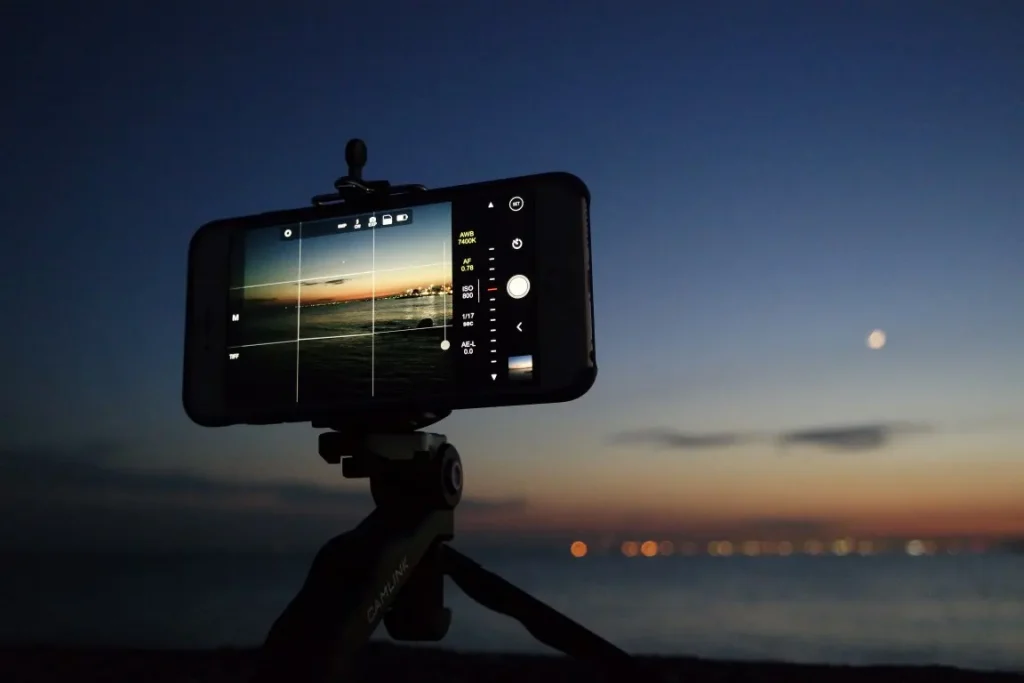
What is the best smartphone for Milky Way photography?
Astrophotography enthusiasts who want to capture stunning Milky Way shots usually prefer high-end flagship smartphones from renowned manufacturers.
However, if you’re on a tight budget, you can still pursue this hobby by using a more affordable smartphone.
Here I have listed high-end smartphones as well as budget smartphones for your milky way photography. It will help you decide what type of smartphone you use or buy for your shooting.
| High-End Smartphones | Budget Smartphones |
|---|---|
| Samsung Galaxy S20 Plus | Samsung Galaxy A72 |
| Samsung Galaxy S21 Plus or Ultra | Xiaomi Redmi Note 10 Pro |
| Apple iPhone 11 Pro, Apple iPhone 12 Pro, Apple iPhone 13 Pro Max | |
| OnePlus 8 Pro, OnePlus 9 Pro | |
| Huawei P40 Pro, Huawei P50 Pro |
What is the best camera app for night sky photography?
Dark Sky Finder
This is one of the best apps to find out details about light pollution.
You can find the best places to take pictures of the night sky by showing you light pollution levels in different areas. This can be very useful for planning a photo shoot and getting the best results.
Dark Sky Finder helps you locate ideal spots for capturing the Milky Way while avoiding any interference from light pollution.
Sky View
Sky View is an app that uses your phone’s camera and augmented reality technology to show you what objects are in the night sky.
It can help you identify stars, constellations, and planets, making it a useful tool for planning and framing your night sky photos.
PhotoPills
PhotoPills is a powerful app that includes a range of features for night sky photography.
It can help you plan your shoot, calculate exposure times, and even predict when the Milky Way will be visible in your area.
This consists of a virtual reality mode that lets you see how the night sky will look at different times of the year.
Weather
The Weather Channel – Weather can play a crucial role in night sky photography, and this app provides detailed information on current and future weather conditions in your area.
This can help you plan your shoot and ensure that you have the best possible conditions for capturing stunning night sky photos.
TPE
The Photographer’s Ephemeris – TPE is a popular app among photographers that provides detailed information about the sun and moon’s position and movement.
This can be useful for planning night sky photos as it can help you determine the best time and location to capture the Milky Way or other celestial objects.
I also added a video from youtube for your reference, this video includes some of the apps that I already discussed in this article and camera settings.
Conclusion
Finally, by knowing the right equipment, the way to prepare for milk way shooting using a smartphone, the perfect settings, and the best smartphone for milk way you can succeed in your shooting on the milky way.
You will need a smartphone with a decent camera, a sturdy tripod with a smartphone mount, a remote shutter for your smartphone, a power bank or extra battery, a microfiber cloth, and a headlamp or LED flashlight.
Choosing a moonless night with clear skies and no clouds, and finding a location with minimal light pollution are the key points that you should remember.
Use an app to locate the Milky Way in the sky or find it yourself, as well as your smartphone camera, which is set to a shutter speed between 30 and 60 seconds and an ISO of 1600 to 3200.
Justin Parker is a professional photographer and has been in the industry since 2007. He attended the University of Georgia. Justin combines his passion for photography and his interest in writing to give life to this blog which talks about photography in order to help and inspire young photographers.

